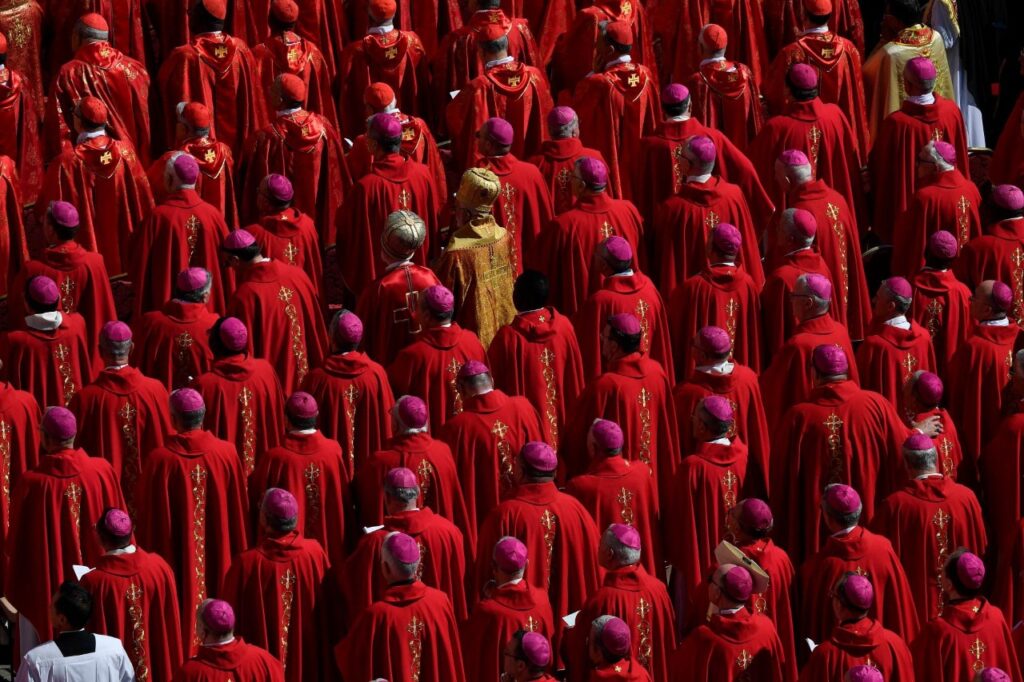The ballot is rectangular, with the top half bearing the Latin phrase [“Eligo in Summum Pontificem” (“I elect as Supreme Pontiff”.)] and the bottom half left blank for the cardinal to write the name of their chosen candidate.
Ballot Distribution
Each cardinal elector receives at least two or three ballots, distributed by the ceremonial officers. Then, the senior cardinal deacon draws lots to appoint three scrutineers (to count the votes), three infirmarii (to collect votes from ill cardinals), and three revisers (to verify the count). If any of those selected are unable to fulfil their roles due to illness or other reasons, new names are drawn in their place. This stage is known as the pre-scrutiny.
The “Room of Tears”
Once a Pope is elected, he will be led to the “Room of Tears”, a small room next to the Sistine Chapel where he dons the white papal vestments for the first time.
The Voting Process
Each cardinal, in order of precedence, writes the name of their chosen candidate on the ballot, folds it, holds it aloft so it is visible, and carries it to the altar. There, a chalice is placed with a plate covering it.
The Count
After all votes have been cast, the first scrutineer shakes the chalice to mix the ballots. The last scrutineer then counts them one by one, transferring them into a second, empty container. If the number of ballots doesn’t match the number of voters, all ballots are burned and a new vote is held immediately. If the count is correct, the ballots are opened and read.
The Required Majority
To elect a new Pope, a two-thirds majority is required. For the upcoming conclave on Wednesday, 7 May, that means at least 89 votes are needed out of 133 electors.
Voting Rounds and Spiritual Pauses
Voting occurs four times daily – twice in the morning, twice in the afternoon. If, after three days, no candidate has been chosen, voting is paused for one day of prayer, informal discussions, and a brief spiritual exhortation by the senior cardinal deacon.
If still no Pope is elected after 21 votes, a final pause for prayer, dialogue, and reflection is observed. At this point, voting continues — but the cardinals may only choose between the two candidates who received the most votes in the previous round. Even then, a two-thirds majority is still required, and the two candidates in question are not allowed to vote. | vaticannews.va



